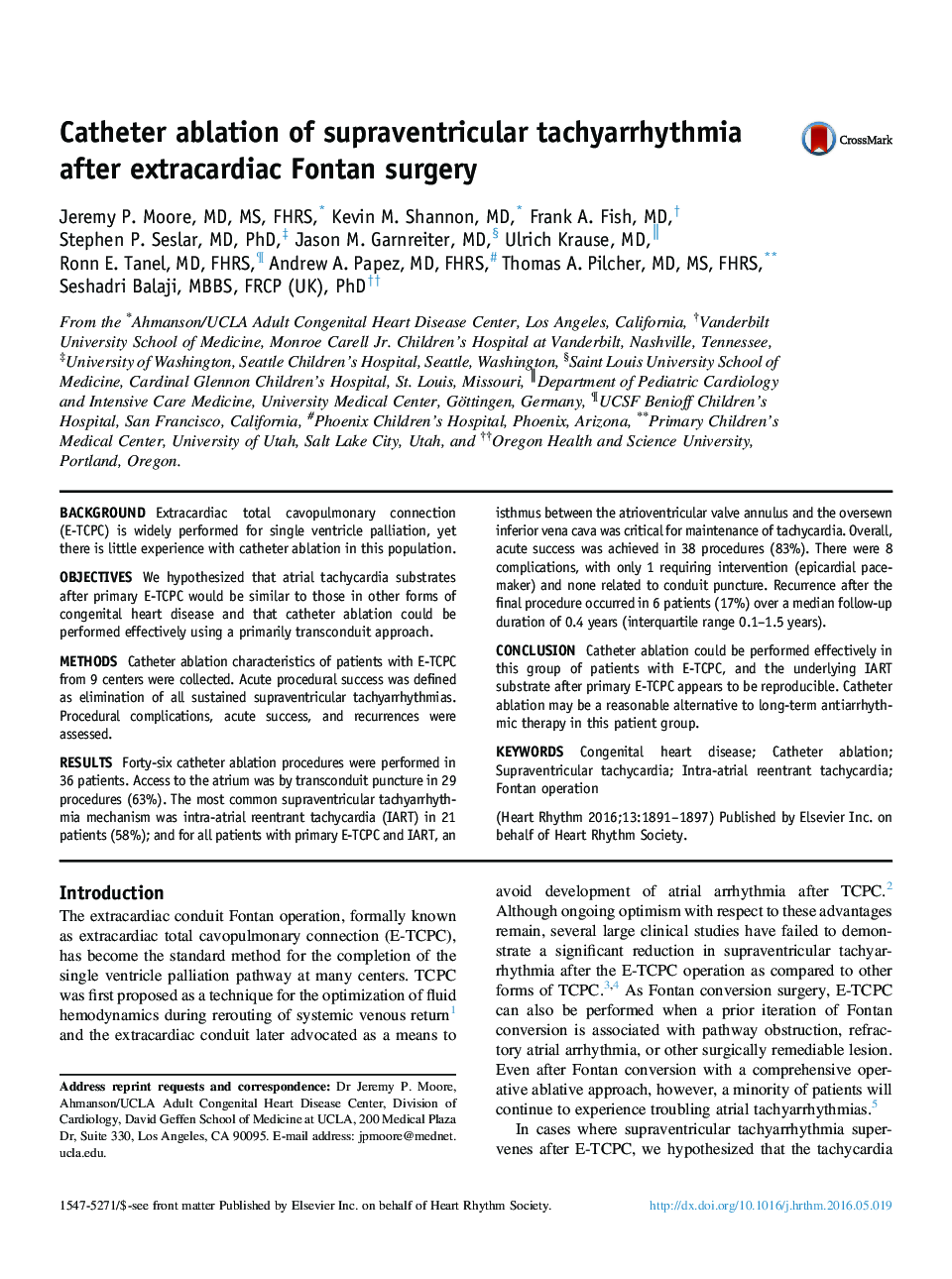| Article ID | Journal | Published Year | Pages | File Type |
|---|---|---|---|---|
| 2921683 | Heart Rhythm | 2016 | 7 Pages |
BackgroundExtracardiac total cavopulmonary connection (E-TCPC) is widely performed for single ventricle palliation, yet there is little experience with catheter ablation in this population.ObjectivesWe hypothesized that atrial tachycardia substrates after primary E-TCPC would be similar to those in other forms of congenital heart disease and that catheter ablation could be performed effectively using a primarily transconduit approach.MethodsCatheter ablation characteristics of patients with E-TCPC from 9 centers were collected. Acute procedural success was defined as elimination of all sustained supraventricular tachyarrhythmias. Procedural complications, acute success, and recurrences were assessed.ResultsForty-six catheter ablation procedures were performed in 36 patients. Access to the atrium was by transconduit puncture in 29 procedures (63%). The most common supraventricular tachyarrhythmia mechanism was intra-atrial reentrant tachycardia (IART) in 21 patients (58%); and for all patients with primary E-TCPC and IART, an isthmus between the atrioventricular valve annulus and the oversewn inferior vena cava was critical for maintenance of tachycardia. Overall, acute success was achieved in 38 procedures (83%). There were 8 complications, with only 1 requiring intervention (epicardial pacemaker) and none related to conduit puncture. Recurrence after the final procedure occurred in 6 patients (17%) over a median follow-up duration of 0.4 years (interquartile range 0.1–1.5 years).ConclusionCatheter ablation could be performed effectively in this group of patients with E-TCPC, and the underlying IART substrate after primary E-TCPC appears to be reproducible. Catheter ablation may be a reasonable alternative to long-term antiarrhythmic therapy in this patient group.
